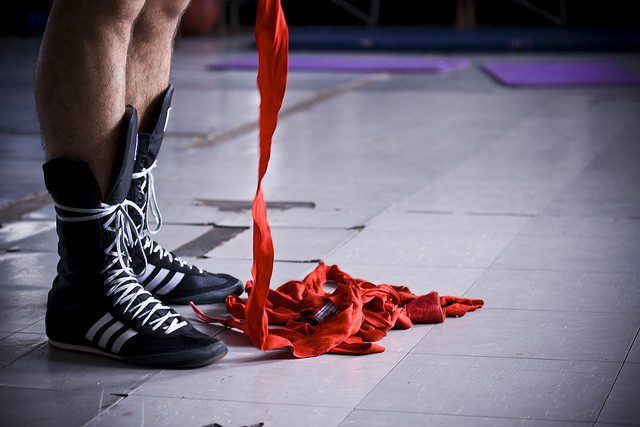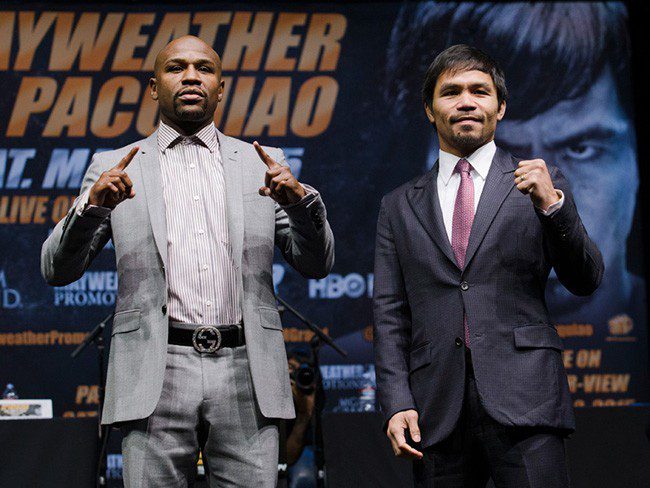MMA Competition Guidelines: Rules of Fighting
In the 1980s, mixed martial arts, or MMA, was initially used for competitive purposes. The mixed martial arts technique was well-liked even in the early 1900s in the Pacific, Europe, and Japan, among other regions.
People claim that the 1993 debut of the UFC (Ultimate Fighting Championship) contributed to the growth and popularity of MMA.
MMA is frequently referred to as the world’s fastest-growing sport. It employs techniques from Judo, Brazilian jiu-jitsu, boxing, Thai-boxing, and other martial arts.
Every sport has its own set of guidelines. As a result, those who are new to MMA usually ask for clarification on what is allowed and forbidden as per MMA competition guidelines.
MMA competition guidelines allow athletes from a variety of backgrounds to take part. The rules and regulations of MMA permit the use of grappling and striking techniques while seated as well as while standing.
The first set of uniform amateur MMA rules were published by the IMMAF in 2014. For those of you who are brand-new fans and are still trying to learn the rules of this sport, here are some of the main MMA laws.
All the rules for notable MMA competitions will be examined in this post. If you are looking to buy gloves for competition, please go through our expert reviewed list here
Basic Rules Of MMA
The basic rule of fighting within MMA competition guidelines are listed below
- Male athletes can compete only against men and must wear a groin protector while female fighters can compete only against women and must wear a chest protector
- If the mouthguard is not worn, the fighters cannot fight
- A referee is present inside the ring as two opponents battle
- The referee has the authority to remove a combatant if they commit multiple fouls throughout the bout
- The combat takes place in a fenced-off area or ring.
- Spitting, kicking an opponent who is down, and pulling someone’s hair are a few examples of the various types of infractions.
- The judges’ verdicts are based on the fighters’ powers of assault and defense and their fighting styles.
- Participants must wear MMA gloves that weigh at least four ounces. The weight of the gloves should not exceed six ounces.
- There are 5 rounds in each battle, with one minute of pause in between each round. Each round lasts for 5 minutes
- A total score of 10 is used to score each round
Weight Division (MMA Competition Guidelines)
As per MMA competition guidelines, there are ten weight classes for men and six for women. Amateur participants are weighed prior to the competition as well as on each succeeding competition day at events like the MMA World Championships.
Men’s Division:
- Lightweight: 155lb (70.3kg)
- Light heavyweight: 205lb (93.0kg)
- Flyweight: 125lb (56.7kg)
- Strawweight: 115lb (51.1kg)
- Featherweight: 145lb (65.8kg)
- Middleweight: 185lb (83.9kg)
- Welterweight: 170lb (77.1kg)
- Bantamweight: 135lb (61.2kg)
- Heavyweight: 265lb (120.2kg)
- Super heavyweight: +265 lb (+120.2 kg)
Women’s Division:
- Lightweight: 155lb (70.3kg)
- Featherweight: 145lb (65.8kg)
- Strawweight: 115lb (52.2kg)
- Atomweight: 105lb (47.6kg)
- Flyweight: 125lb (56.7kg)
- Bantamweight: 135lb (61.2kg)
The Battlefield Area
MMA matches take place in a ring or a cordoned-off area. If caged, it ought to have an octagonal shape with eight sides. If fenced, it ought to have at least six corners or be spherical.
Attire for MMA matches
The attire for mixed martial arts is rather simple. A fighter must wear a mouthguard, a pair of shorts, open-fingered gloves, groin protection for men, and protective chest gear and a blouse for women, according to the sport’s Unified Rules.
The combatants have to compete barefoot. As a result, wearing foot cushioning or shoes is prohibited as per MMA competition guidelines. Speedo-style shorts, pants, and Gi tops are all prohibited for MMA athletes.
Shorts
- Participants need to wear MMA battle shorts, such as bicycle shorts, kick-boxing shorts, board shorts, or any other approved shorts
- Speedo-style shorts are not allowed
Shirts
- Shirts and Gi tops are not permitted for male competitors.
- Female competitors need to wear clothing that has been approved by the commission.
Gloves
- The promoter is required to provide gloves; MMA athletes are not permitted to provide their own.
- Open-fingered gloves should be approved by the commission when fighting
- To prevent injuries, the knuckle area must have cushioning of at least an inch
- The weight of protective gloves should be between four and six ounces
- With permission, larger gloves may be worn
Mouthguards
- The mouthpieces worn by competitors must be in place and have been approved by their attending physician before rounds start as per MMA competition guidelines
- During a bout, competitors should wear a protective mouthpiece at all times that has been approved by the commission
- The referee will stop the bout, clean the mouthpiece, and restart it if one of the fighters’ mouthpieces gets knocked out during the fight
Protective Gears
- Men must always wear groin protection during a fight
- Groin guards are not permitted for female combatants
- During tournaments, female fighters must wear authorized chest protection
- A protective cup and a jock strap are included in the groin protection
Bout Duration
The majority of mixed martial arts fights without titles have three rounds, each lasting five minutes, with one minute of rest in between. However, for title fights, five rounds are allotted. The break between MMA fighting rounds usually lasts for 2 minutes.
Every fight starting in the quarterfinals of the featherweight grand prix championship tournament and every fight in Bellator MMA’s welterweight grand prix championship tournament were planned for 5 rounds, like all UFC main events.
However, this may differ for some campaigns. The first round in both the former Pride Fighting Championship and the current promotion, Rizin, was 10 minutes long, with subsequent rounds being 5 minutes long.
Invicta’s Phoenix Series tournaments have one 5-minute round for the quarterfinals and semi-finals, and the championship has three 5-minute rounds.
Points
In MMA bouts, when a decision must be made, points are crucial. Provided both fighters are able to keep fighting beyond the 5th round and haven’t been knocked out by their opponent. The judges then decide the winner based purely on points but within MMA competition guidelines.
Judges award points for each round of a bout. These officials score each round according to a 10-point scale. Both competitors are awarded ten points if the round ends in a tie. A judge will award the round 10-9 to the victor if only one fighter has won the round.
A judge may even award a 10-8 round if one combatant dominates the round. Rarely does a fighter win a round 10-7, which means that he or she was in complete control and the other fighter didn’t do much.
At the end of the fight, these scorecards are added up to find out who won. Taking a point away for breaking the rules of the fight is a big deal, and the fighter will probably lose the round as a result.
MMA Competition Guidelines – Winning Criteria
MMA fights can be won in a variety of ways. They are discussed down below.
- Forfeit: If a fighter is injured before the start of the fight, they may declare a forfeit. When a player forfeits a game because they are unable to fight, the opponent wins by default.
- Submission: If one fighter gets a submission hold on the other, the other fighter has two ways to declare victory: he can either tap out on his opponent’s body or say it out loud. The opponent wins via submission if the player taps out or loses consciousness while being choked in a submission grip.
- Disqualification: Sometimes a boxer may deliberately commit an illegal conduct that prevents his or her opponent from continuing the fight. A boxer receives a warning each time they use an unsportsmanlike maneuver. They lose their eligibility after three warnings.
- A no-contest call can be made if both fighters break the rules or if one of the fighters gets hurt because they accidentally did something illegal. The fight is ruled a no contest if the fighters intentionally or inadvertently disobey the regulations.
- Knockout: A knockout occurs when a fighter passes out as a result of an opponent’s blows. A knockout is when a contestant knocks out an opponent with a powerful blow and the opponent loses consciousness.
- Technical Knockout: When a bout is stopped by the referee, a technical knockout can be declared in a few different ways. When a fighter can no longer defend themselves, usually as a result of an effective strike by their opponent, the referee may declare a knockout. In a technical knockout, a referee may stop the fight because the player cannot defend himself or if continuing the fight could endanger his health.
- Decision: In the event that a fight goes on for all the rounds, three judges will determine the winner. The conventional method of winning is based on judge ratings.
MMA Competition Guidelines – Fouls
Even though MMA allows for the usual smashes, grappling, kicks, and punches, it isn’t the no-holds-barred style that the first UFC event advertised. There are a lot of activities that boxers may do that could be viewed as fouls as per MMA competition guidelines. These include the following:
- Fish hooking
- Head-butting
- Biting
- Any type of eye pike
- Spitting on an opponent
- Any type of groin attack
- Pulling the hair
- Handling of small joints
- Hit down with the tip of the elbow
- Kick the liver with the heel.
- Blows to the back of the head or spine
- Blows of any kind to the throat including grasping the trachea
- Grasp the clavicle
- Twisting, grabbing, or pinching the skin
- Kneeling on the head to a fallen opponent
- Kicking a fallen opponent in the head
- Trampling a fallen opponent
- Grabbing an opponent’s shorts or gloves
- Grabbing the fence
- Engaging in misconduct that causes injury to an opponent
- Using obscene language within the fighting area
- Attacking an opponent who is being served by the referee
- Attacking an opponent during a break
- Attacking an opponent after the bell has rung to end the assault
- Throwing an opponent out of the fighting area
- Shyness which includes avoiding contact with an opponent
- Repeatedly pulling the mouth guard of an opponent or feigning an injury
- Falling an opponent to the ground on his head or neck
- Not obeying the instructions of the referee
MMA Competition Guidelines – Judging Criteria
The 10-point system is applied to every MMA bout. Each round is scored by three judges, who award the winner 10 points and the loser 9 points or less.
At the end of the fight, each judge gives a total score for all the rounds for each fighter, and the winner is decided by the following criteria:
- Split decision victory: Two judges award the victory to one boxer, while the third awards it to the other fighter
- Split draw: Two judges pick separate winners, while one judge declares it a draw
- Win by unanimous decision: The same combatant is declared the victor by all three judges
- Unanimous draw: All three judges give it a unanimous draw
- Win by majority decision: Two judges award the victory to one boxer, and the third judge rules a tie
- Majority draw: A majority draw occurs when two judges give it a tie and one judge declares a winner.
Summary
In the full-contact combat sport of mixed martial arts, individuals from different combat sports can compete employing a variety of fighting techniques and skills.
Despite the fact that mixed martial arts have been practiced for at least 100 years and possibly even 1,000, this sport has only recently gained popularity.
To ensure fighter safety and to make the regulations more palatable, some rule modifications were adopted into the MMA competition guidelines. Eventually, the Unified Rules of Mixed Martial Arts were created. Almost all of the states in the country have recognized the sport because of the common rules.
Despite the widespread misconception that mixed martial arts (MMA) is a type of no-holds-barred human cage fighting, the sport has developed from its probably irrational beginnings into one that is very tightly governed.
The general public’s perception of MMA has greatly improved as the sport has grown in popularity. If you have any questions or would like to find out about additional guidelines that weren’t included in this piece, don’t hesitate to leave a comment or get in touch.
Frequently Asked Questions
Discover knockout gifts for combat sports fans and enthusiasts on our Gifts Page, just in time for the holiday season and Amazon Prime Day. Get ready to surprise your favorite fighters with the perfect presents they’ll love! You can’t go wrong with any of these gifts, they are all unique and made for people who love combat sports!
Looking to buy other boxing products, for boxing visit the following best list articles best boxing headgear, best boxing gloves overall, best boxing gloves for competition, best boxing shoes and best boxing shorts. We also have some great reviews written by experts for MMA & BJJ enthusiasts as well, best MMA gloves, best MMA headgear, best BJJ headgear, best BJJ accessories & best BJJ knee brace.
For those who of you that practice combat sports for fitness, here are some must have products best free standing punching bags, best supplements, best martial arts weapons.
For some of us that love good products without having to break the bank best boxing gloves under $100, best boxing shoes under $99, best boxing headgear under $50, best boxing bags under $50.
For brand related articles, check Best Hayabusa | Best Winning | Best Everlast | Best Cleto Reyes | Best RDX | Best Rival | Best Venum | Best Ring to Cage










BoxingGlovesReviews is a participant in the Amazon Services LLC Associates Program. You will be supporting our small operation by buying through this website, as we get a small percentage of the sales. Thank you!